The Route of the Hiawatha is one of the most dramatic rails to trails projects in the U.S. The route was the last transcontinental railroad completed during the early 20th century, linking Chicago with the Pacific Northwest.
The trail runs downhill for 15 miles between the start in MT to the finish in ID, and passes through ten tunnels and travels over seven high trestles, following the mountainous terrain along Loop Creek. It is managed by Lookout Mountain Ski Area, which provides shuttles, bike rentals, and charges $10 per person to use the trail and $8 for the shuttle.
The first tunnel from the East Portal trailhead in Montana is the St. Paul or Taft Tunnel, a 1.66 mile tunnel that is 19 feet high and nearly 15 feet wide. The trail crosses the state line into Idaho in the tunnel, so the remainder of the trail is in Idaho.
The St. Paul tunnel is not lighted, so riders should bring a good headlight for the trip. In addition to being very dark, the St. Paul tunnel is also very chilly, and often damp from water seeping through the rock. Even on a hot day outside, temperatures in the tunnel can be in the upper 40s to low 50s. We could tell riders who had ridden the Hiawatha for several days after, as they all had water and mud splashes up their backs from the damp trail.
There’s a nice waterfall right at the Western exit of the St. Paul tunnel, that is a very popular photo spot for trail riders.
As the trail winds gradually downhill with several switchbacks, you’ll see several amazing overlooks of the trail below in addition to the mountains and forests around the trail.
The trestles are a highlight of the trail, even if you’re afraid of heights like I am. The highest is 850 feet long and 230 feet above the ground. But, they all are very wide and substantial and have solid railings. The view looking down is really awesome, and might even bring an adrenaline rush to some travelers.

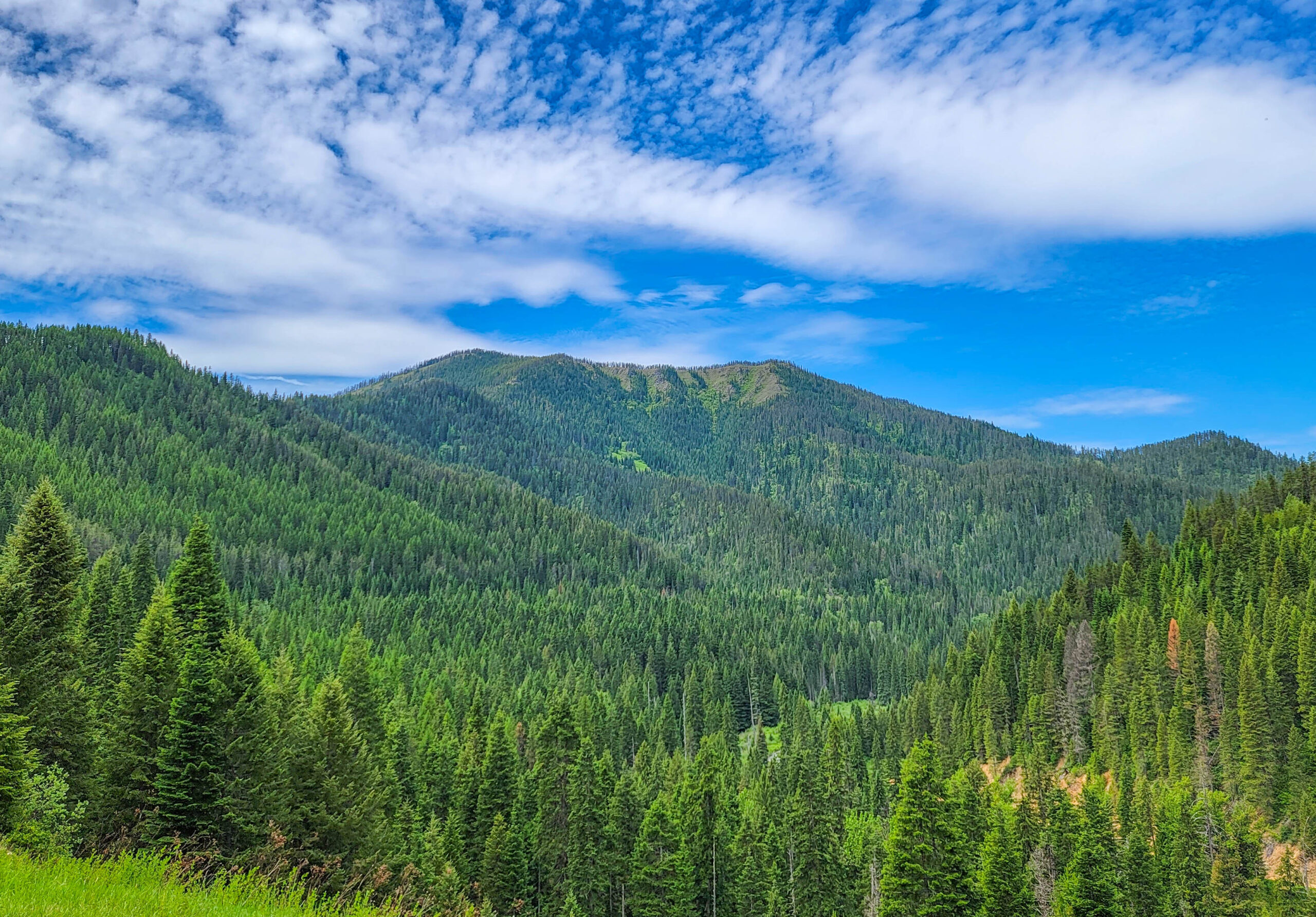
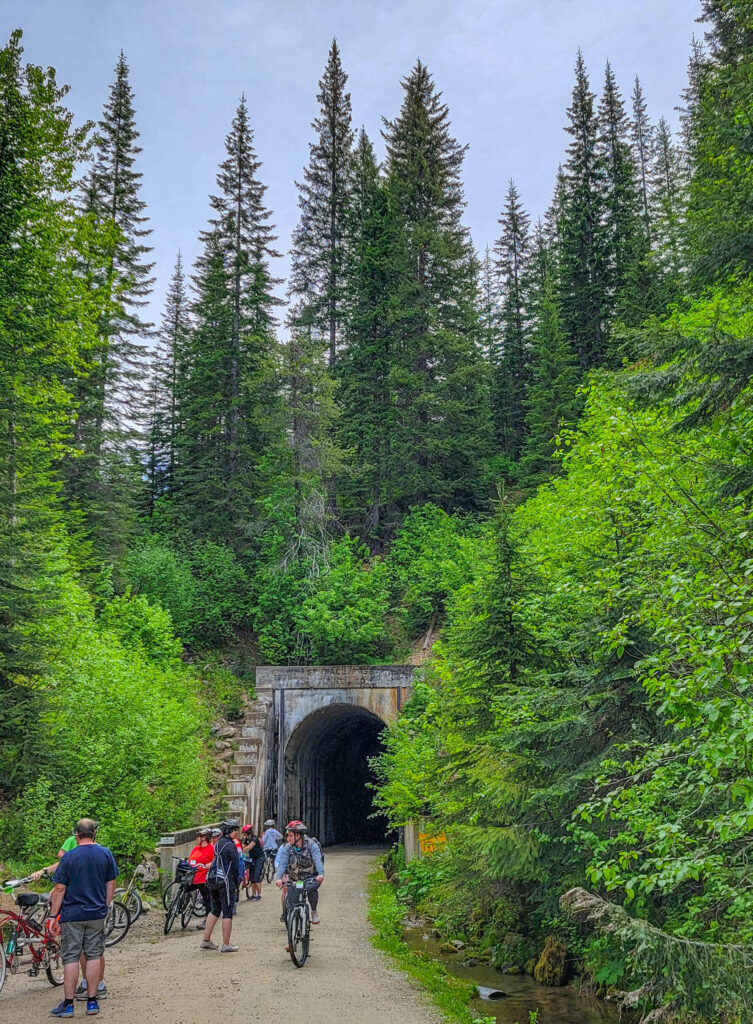
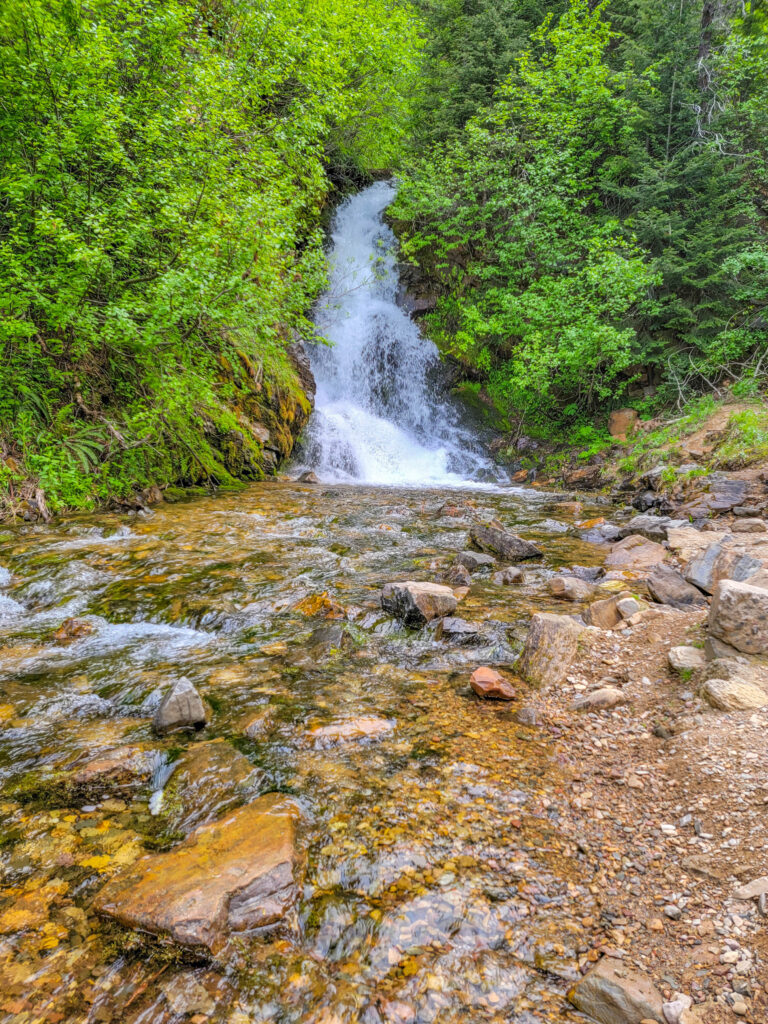
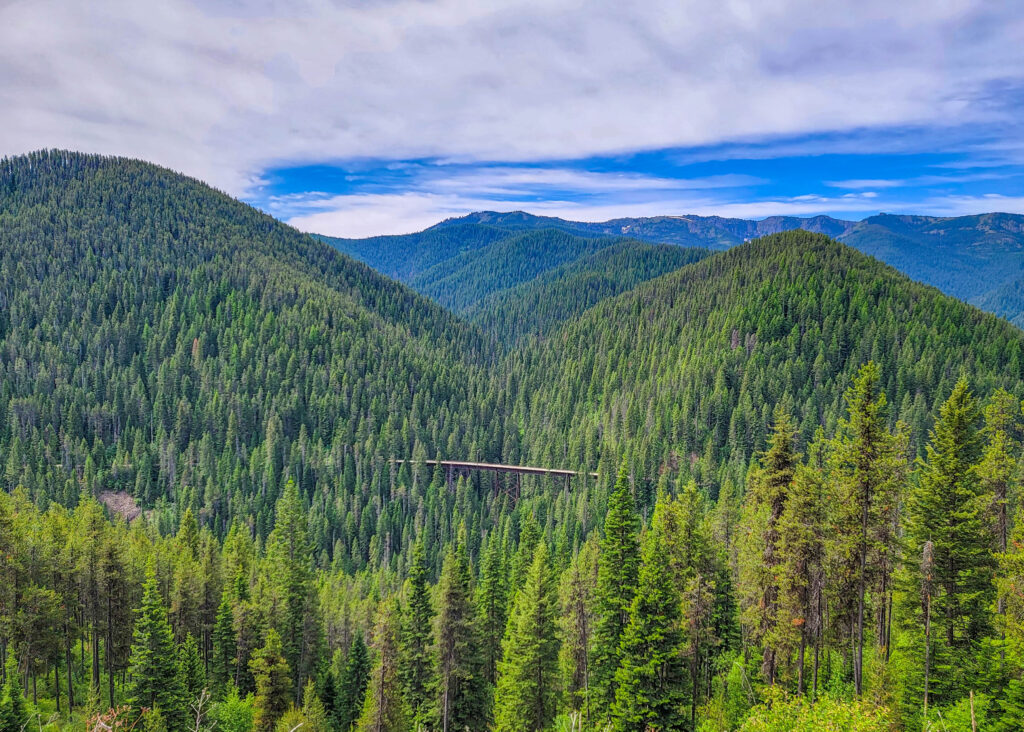
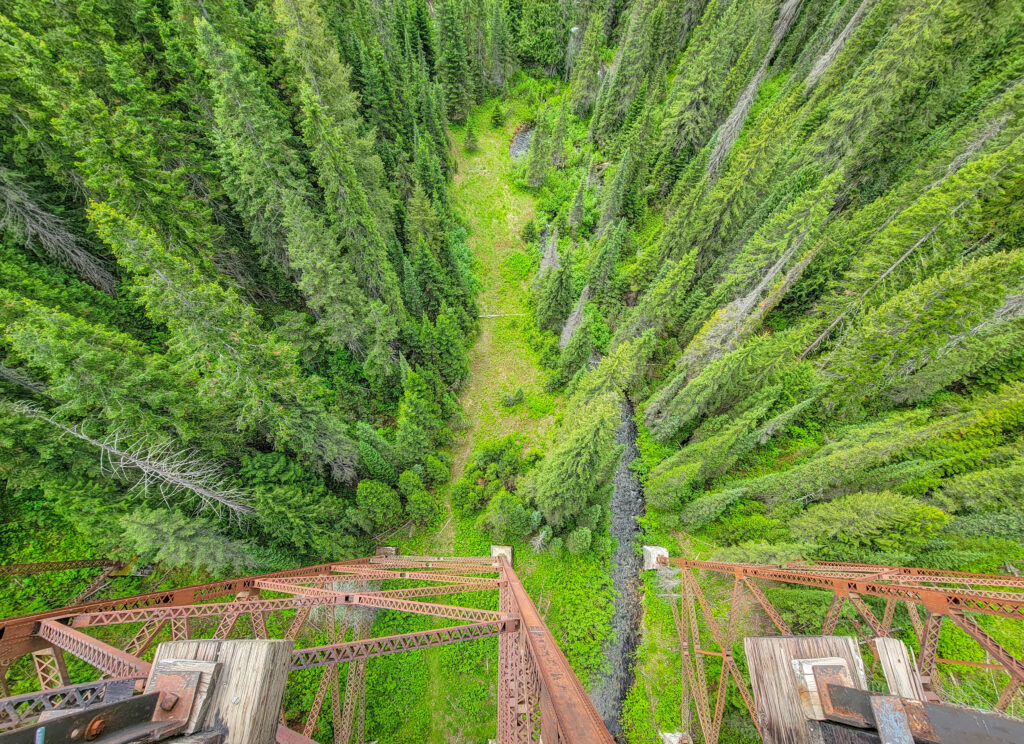
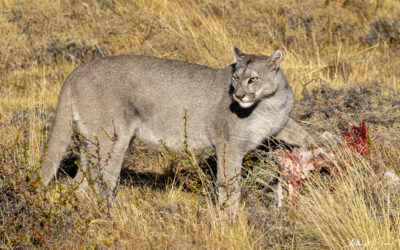

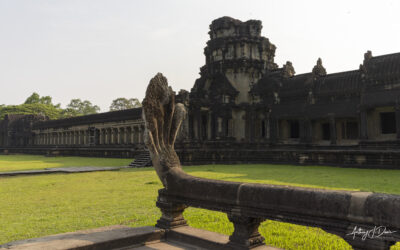
0 Comments